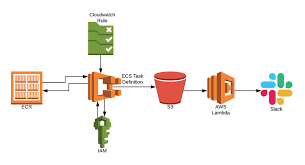The Limits of AWS Architecture: What AWS Architects Are Doing to Improve Long-Term Cost and Performance
Discover challenges AWS Architects face in cost optimization and performance maintenance. Learn strategies like AWS Cost Explorer, reserved instances, and serverless computing for efficient infrastructure design.


Amazon Web Services (AWS)
is a top choice for cloud computing, providing many services to meet different business needs. As more companies move to the cloud, AWS Architects are essential for designing, setting up, and improving AWS systems. Even with their skills, AWS developers often run into problems with managing long-term costs and performance. Keeping costs under control can be tricky, and ensuring that everything runs smoothly over time can be challenging.
It's critical to recognize the complexity of AWS systems to comprehend the difficulties faced by developers in terms of expenses and performance. AWS offers a vast array of services, each with its pricing structure and performance characteristics. This complexity can make it hard for developers to find the most cost-effective and efficient solutions for their needs.
The dynamic nature of cloud computing poses a significant problem for AWS architects. AWS provides a flexible system that lets organizations adjust their resources as needed. This means they can change their setup to match their current needs. While this flexibility is useful, it can make predicting and controlling costs more complex. If not planned and monitored carefully, organizations might spend more on resources they don’t need.
AWS Architects are implementing several cost-optimization techniques to address this issue. Using AWS Cost Explorer, a tool that offers insights into cost and consumption patterns, is one strategy. By looking at this data, developers can find ways to improve and decide how to use resources better. AWS also offers products like AWS Trusted Advisor and AWS Budgets. These tools give advice and alerts to help organizations keep their costs under control and stay within their budget.
Using reserved instances is another tactic used by AWS Architects. Reserved instances let organizations commit to a certain type of instance and period in return for a big discount on the hourly rate. Buying reserved instances smartly can help organizations save a lot of money. This is especially true for tasks that are used regularly.
Performance enhancement is another area of emphasis for AWS Architects in addition to cost reduction. AWS provides many services and settings that can be adjusted to fit specific performance needs. However, choosing the right mix of services and settings can be tricky, especially for complex tasks.
To tackle this issue, AWS Architects are taking a complete approach to performance optimization. Examining every aspect of the application is necessary for this, including the application code and the underlying infrastructure. By finding and fixing slow spots and inefficiencies, developers can make specific improvements to boost performance.
To help with this process, AWS provides a variety of performance optimization tools and services. For example, AWS CloudWatch offers real-time monitoring and shows how resources are being used. This helps developers spot performance issues and fix them quickly. AWS Elastic Beanstalk makes it simple to deploy and manage applications. When necessary, it automatically scales up or down and enhances performance.
AWS Architects are also using serverless computing to boost performance and cut costs. Serverless computing lets developers concentrate on writing code without managing the underlying infrastructure. AWS Lambda is a serverless service that runs code when needed and adjusts automatically to handle different amounts of work. With serverless setups, organizations get great performance and save money because they only pay for the time their code runs.
To keep costs low and performance high over time, AWS Architects are adopting a mindset of continuous improvement. This means you need to regularly check and improve your infrastructure and applications. It's also essential to stay up to date on AWS services and best practices.
In conclusion, AWS Architects play a crucial role in designing and setting up AWS infrastructure. However, they do face challenges related to managing costs and performance. The complexity of AWS and the changing nature of cloud computing require careful planning and monitoring. To manage costs and performance better, AWS Architects use tools to optimize expenses and plan for reserved instances. They also take a thorough approach to boost performance. Using serverless computing and always looking for ways to improve can help make AWS systems run better and more smoothly.
FAQ's
How can AWS Cost Explorer help with cost optimization?
AWS Cost Explorer helps by providing detailed insights into your spending patterns. It lets you analyze your costs and usage over time, which can help you find areas to save money and make better decisions about resource usage.
What is the significance of performance tuning in AWS?
Performance tuning is crucial because it ensures that your AWS resources are used efficiently. By improving performance, you can make your applications run faster and respond better. This can also help lower costs.
How does using a multi-region strategy affect AWS performance and costs?
A multi-region strategy can improve performance by reducing latency and increasing availability. However, it can also increase costs due to data transfer fees and the need to manage resources across multiple regions. Balancing these factors is key to effective cost and performance management.
Can AWS Cost Explorer help predict future costs?
Yes, AWS Cost Explorer can predict future costs using past data. This helps you see how much you might spend in the future. This helps organizations plan budgets and anticipate spending needs for upcoming months or years.
What is the role of architectural reviews in managing AWS costs and performance?
Architectural reviews involve examining your AWS setup and design to ensure it aligns with best practices. These reviews can find areas where resources are not used efficiently. They help make sure resources are used wisely and can also help with managing costs and improving how well things perform.


